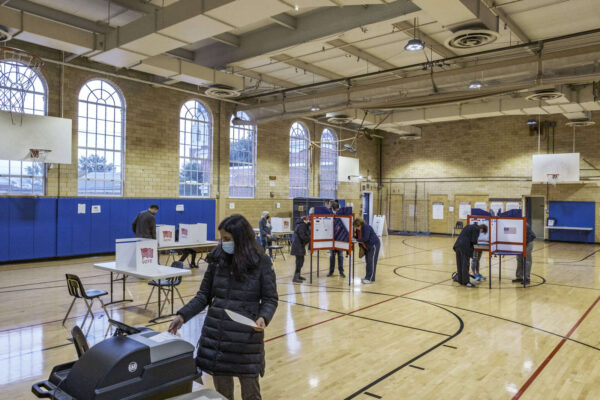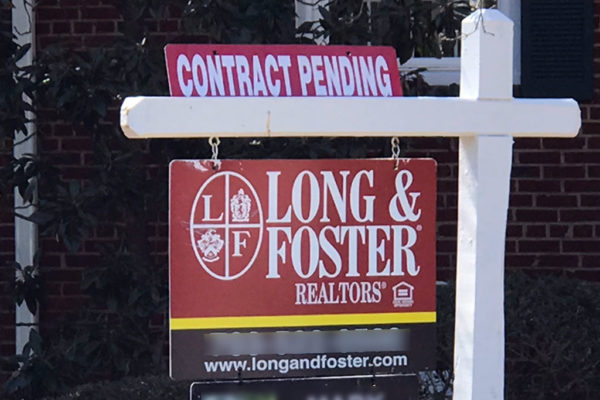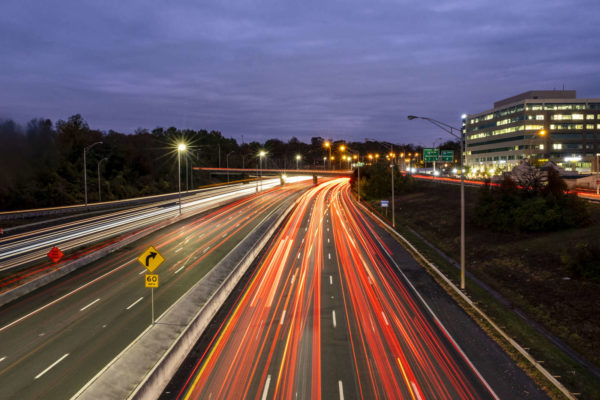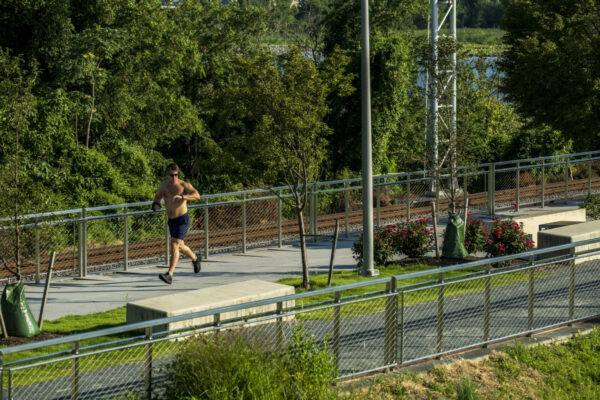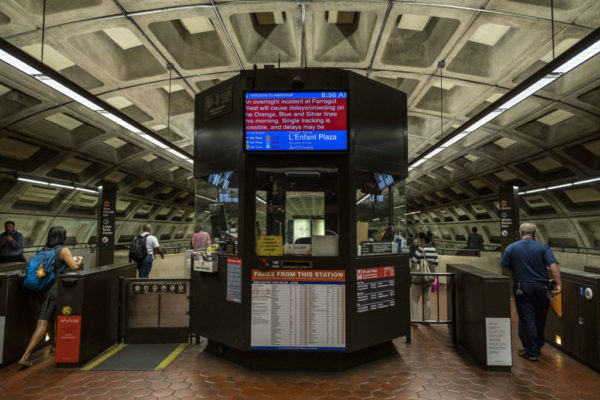
Metro announced on Friday that transit police will soon resume citing those who try to ride without paying the fare.
The announcement follows an NBC 4 story earlier this month that fare evasion on buses is “reaching eyepopping numbers.”
A WMATA press release, below, notes that the transit is also considering faregate modifications at Metrorail stations, to prevent fare evasion.
Metro Transit Police officers will begin issuing fare evasion citations on Tuesday, November 1, following a monthlong awareness and warning campaign. Citations with associated fines may be issued to anyone jumping fare gates, improperly using emergency gates, or not tapping fare boxes on Metrobuses.
Fare recovery is a major issue and has been mentioned as one of the top concerns of customers when talking with Metro staff and Metro Board Members. Revenue from fares allows Metro to keep buses, trains, and MetroAccess serving our community.
Fare evasion is responsible for significant revenue losses and is part of the focus to close a shortfall of nearly $185 million in the upcoming budget. Using data from Metrobus and pre-pandemic industry averages for Metrorail, Metro estimates revenue losses due to fare evasion totaling tens of millions of dollars in fiscal year 2022.
Metro is working with local partners to offer resources to make public transit more equitable and affordable for those in need. A low-income fare pilot is getting underway in the District, and at Metro’s recent Board Meeting initial concepts about a regional means-based fare program were presented.
Metro is also exploring other methods that will prevent customers from entering rail stations without paying. This month, Metro is expected to begin testing faregate modifications as a preventative measure. Prototypes will be installed as a pilot at a selected rail station. Some of the modifications being explored include physical deterrents on top of faregates and higher barriers.
Fare evasion was decriminalized in D.C. in 2018, becoming punishable only by a civil fine rather than jail time. Civil rights advocates told WUSA 9 that they’ll be closely watching Metro’s new enforcement effort to make sure it is applied evenly and doesn’t unduly target certain places or groups.
The TV station also counted those skipping the fare at a few Metro stations, including Arlington’s Courthouse station.
“In just 20 minutes, we recorded 26 people hopping the [turnstile] at the West Hyattsville station — an average of 78 people per hour. Based on what we gathered, Courthouse in Arlington sees an average of eight jumpers an hour and three an hour at the Van Ness/University of the District of Columbia stop,” WUSA 9 reported.
Meanwhile, overly restrictive faregates have some critics, who say they constrict passenger flow, cost money to maintain and can make getting around more difficult for those with disabilities.
Given all of that, do you fully support Metro’s new measures? Let me know why or why not in the comments.





![Golf carts (Photo by Ralph [Ravi] Kayden on Unsplash)](https://staging.arlnow.com/wp-content/uploads/2022/09/ralph-ravi-kayden-MRelY0fcy6Y-unsplash-600x477.jpg)
